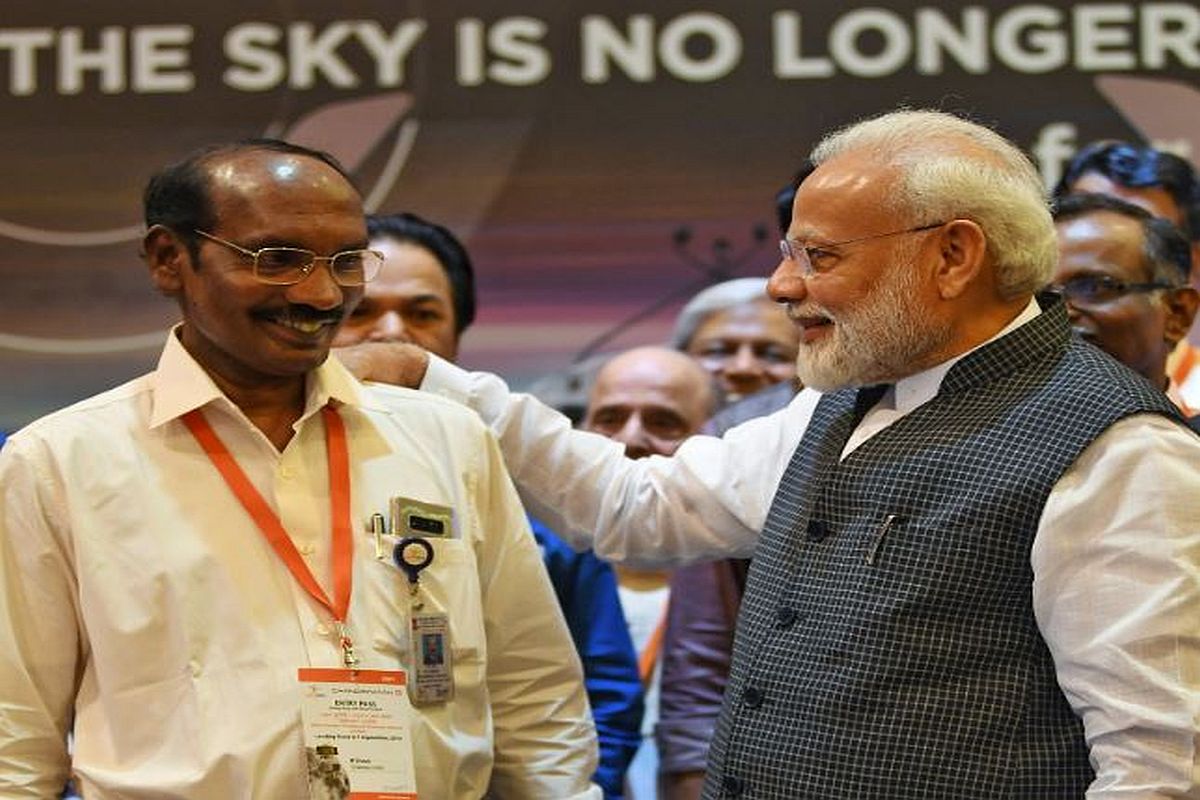With the 14-day window for the Indian Space Research Organisation (ISRO) to establish contact with Chandrayaan-2 lander Vikram coming to an end today, the space agency chief K Sivan on Saturday said that their next priority was the Gaganyaan mission.
Talking to reporters, Sivan said the agency has been unable to restore its link with the lander.
Advertisement
He, however, said that the Chandrayaan 2 orbiter and the eight instruments inside it were working exactly as they are meant to do.
The Vikram lander and the Pragyan rover have a mission life of 14 earth days. However, the 2,379 kg Chandrayaan-2 orbiter will continue to fly around the moon as its mission life is one year.
The ISRO in its update on Chandrayaan-2 said that the “performance of all orbiter payloads is satisfactory and that the orbiter continues to perform scheduled science experiments to complete satisfaction”.
The ISRO, in a statement, further said that a national- level committee consisting of academicians and ISRO experts were analyzing the cause of communication loss with the lander.
In a major setback for the Indian Space Research Organisation (ISRO), communications between the moon lander Vikram and the orbiter got snapped as the former was only 2.1 km away from its designated landing spot on the moon’s South Pole early on September 7 morning.
The lander, which was expected to make a “soft-landing” on the lunar surface crashed and communication was lost, throwing a pall of gloom at the ISRO centre where Prime Minister Narendra Modi and students from across the country had gathered.
ISRO has been racing against time to spring ‘Vikram’ back to life and salvage the lander-rover part of the Chandrayaan-2 mission.
Earlier, the space agency had announced that the lunar lander of Chandrayaan-2 had been located on the moon’s surface and that the ground station was working to establish contact.
Chandrayaan-2, India’s second moon mission spacecraft, had lifted off successfully onboard the “Bahubali” rocket from Satish Dhawan Space Centre in Sriharikota in Nellore district of Andhra Pradesh on July 22.
The prestigious moon mission was aimed at making India the fourth nation in the world to land and ride on the moon after the US, Russia and China.
Meanwhile, the Indian space agency is looking forward to its ambitious manned mission Gaganyaan, scheduled to be launched in 2022.
ISRO plans to send three Indians to space by 2022, an announcement made by Prime Minister Narendra Modi during his 2018 Independence Day speech said. ISRO will also launch Aditya L-1, India’s first solar mission, by next year.
ISRO is planning to have the first unmanned (without astronaut) mission of Gaganyaan, in December 2020 and the second unmanned mission in July 2021. Finally, the first Gaganyaan mission with astronauts will be executed in December 2021, K Sivan had said in January this year.
With a budget of Rs 10,000 crore expected to be spent on the Gaganyaan mission, the Indian Space Research Organisation (ISRO) claims to have put the required infrastructure in place. ISRO has launched a ‘Human Space Flight Centre’ in its headquarters in Bengaluru.











